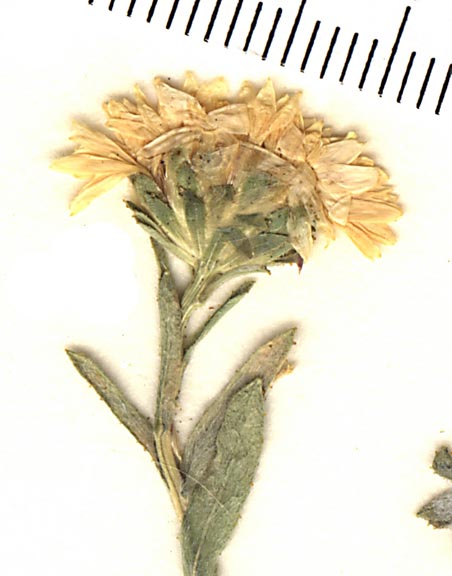
|
Family: Asteraceae |
Annuals, mostly 2-90 cm; taprooted. Stems erect or decumbent, simple or branched from bases or distally, glabrous or villous to woolly. Leaves basal and/or cauline (basal rosettes sometimes withering by flowering); alternate; petiolate or sessile; blades 1-nerved, ovate or obovate to lanceolate, linear, or subulate (bases sometimes clasping), margins entire or dentate to pinnately lobed, abaxial faces glabrous or sparsely tomentose to woolly, sometimes stipitate-glandular. Heads discoid (or ± radiant, corollas of outer florets sometimes enlarged), borne singly or in ± corymbiform arrays (terminal or sessile to subsessile in axils of leaves). Involucres hemispheric, obconic, campanulate, or narrowly cylindric, 4-13 mm diam. Phyllaries 10-55 in 4-8 series, erect or recurved (green to purple), 1-nerved (flat), oblong, ovate, or lanceolate, unequal, herbaceous, scarious, or rarely cartilaginous (apices obtuse to acute), faces glabrous or villous to woolly, sometimes stipitate-glandular. Receptacles slightly convex, pitted, epaleate. Ray florets 0. Disc florets 3-40, bisexual, fertile; corollas white, pink, lavender, or yellow, tubes shorter or longer than funnelform to tubular throats (each with or without colored band inside, limbs frequently palmately expanded in peripheral florets), lobes 5, erect or spreading, lanceolate; style-branch (linear) appendages lanceolate (0.3-1.3 mm) or truncate-penicillate (0.1-0.4 mm). Cypselae (white to tan or mottled purple-brown) cuneiform to linear, not compressed, smooth or obscurely 5-10-nerved, faces puberulent to pilose; pappi persistent, of 3-55, distinct or basally connate, tan to reddish, barbellate, apically attenuate bristles in 1-2 series, sometimes forming coronas. x = 5, 6. In gland-bearing lessingias, the glands may be stipitate and/or sessile (gland-dotted, sometimes in pits) and may be found on stems, leaves, and/or phyllaries. They are seldom restricted to the faces of leaves or phyllaries and are usually most prominent on leaf and/or phyllary margins.
|
This project was made possible in part by the Institute of Museum and Library Services [MG-70-19-0057-19].
Powered by Symbiota



